Smart Home Recycle Bins Project

The objective of this project is quite simply, to track if our waste bin and recycling bins are 'in' or 'out' on the drive for emptying by our council waste/recycling service. If they have not been put out in time for the (early) collection the following morning, then our smart home will remind us to put the bins out and also tell us which bins need to be put out. You can read more about our smart home recycling research.
Design
The first challenge to address is knowing whether the bins are 'in' (i.e. stored in their usual place) or 'out' (on the drive for emptying). We are addressing this with sensors but, it has required us to build a 'dock', to ensure the bins are always placed in the same place. Our approach also assumes that the bins are always placed back in the right order.
The second challenge is in knowing which bins should be out and on which days, so that they will be emptied by the council. Fortunately, this information is published by East Suffolk Council and our bins are pretty much always emptied on the same day (Friday for our street).
So all our contextual smart home has to do is know which bins are in/out at 10pm the day before collection is due and if this doesn't align with the collection schedule, it will send a notification to the appropriate family member. This is achieved by running a bespoke scene.
Build
Magnets
The first job was to take measurements of each bin and work out where to fix the magnets. These are being stuck on with Araldite glue. The width of each bin is different, so we measured the widest point at the outer edge of the wheels. The grey waste bin was 573mm, the blue recycle bin was 576mm and the green garden waste bin was 580mm. To ensure reasonable alignment, we have made the 'slot' for each bin 590mm wide.
Because of the shape of the bins, the magnets will be inset relative to the back edge of the wheels. This is similar on each bin though, with measurements between 72mm and 74mm. In all cases, the centre of the magnets are 85mm from the ground.
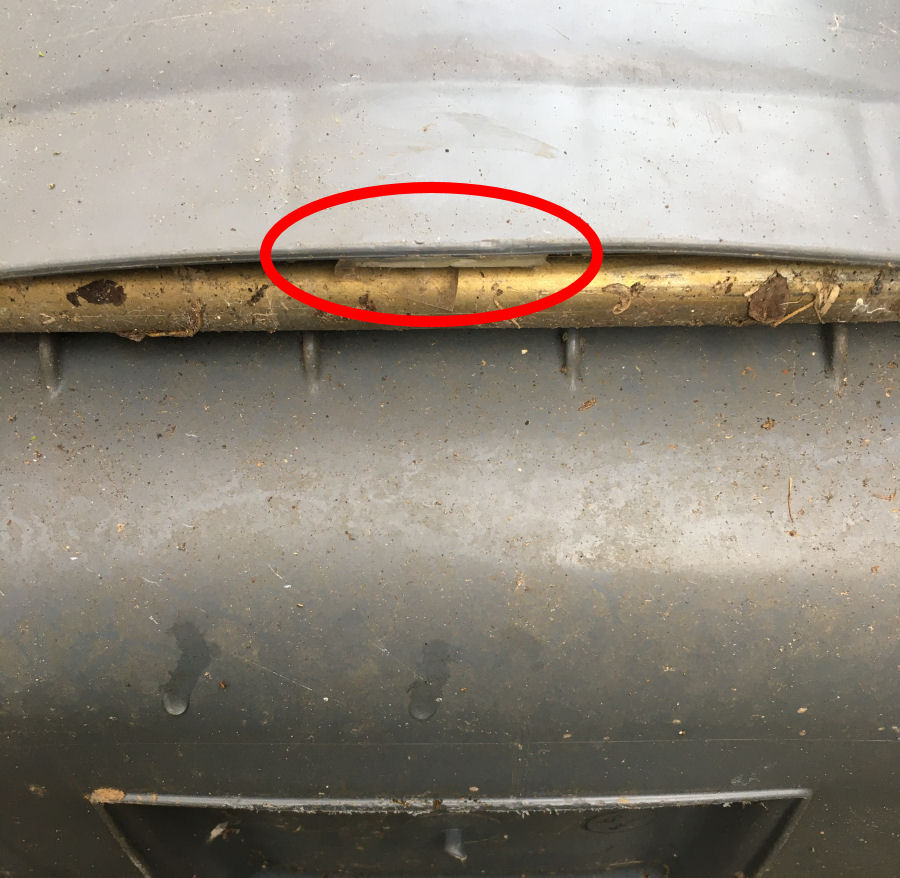
Fixing a magnet invisibly to the grey waste bin was relatively easy. It is circled in this picture because it is behind the plastic edge. The metal bar is the wheel axle and it has to spin freely.
The blue recycle bin has a very similar design.
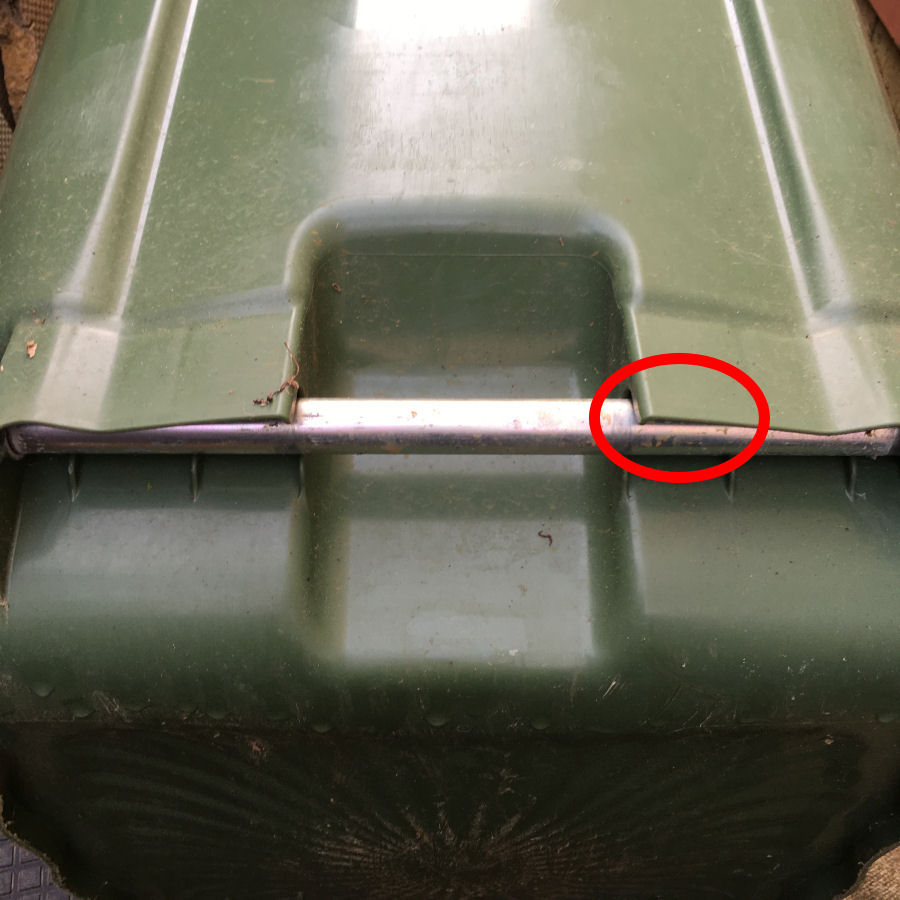
Fixing a magnet invisibly to the green garden waste bin was harder. Its position is circled in this picture and it has to be offset to one side because the bin has a different design.
Sensors
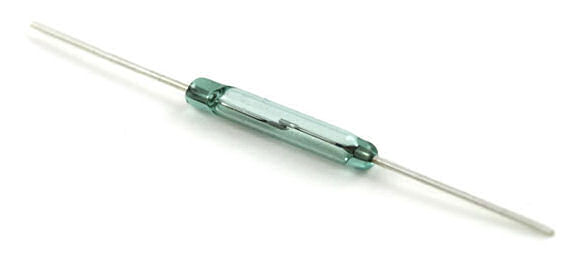
Each bin has a magnet attached (almost invisibly) to the base and this triggers a reed switch mounted in a the 'base', against which the bin usually sits. We have also installed guides to ensure the magnet and sensor line up correctly and thus work very reliably. The reed switches are connected to an Arduino, which reports state back to our contextual smart home. With a magnet present, the reed switch is pulling the Arduino input to ground.
The reed switches we are using are quite large as they were recovered from some old telephone exchange equipment. We were given a huge number of these decades ago and use them in our smart home as they are incredibly reliable.
Dock
We have created a simple 'dock' for each bin, which ensures the magnets align with the sensors used to detect their presence. It means the wheels sit within a limited space and sit flush with the back of the dock.
The dock is made from some left over parts from a previous project, which was to update our front garden. It is using composite wood and recycled plastic lumber. This 'wood' is 100mm × 50mm and in various lengths. It is all dark brown in colour.
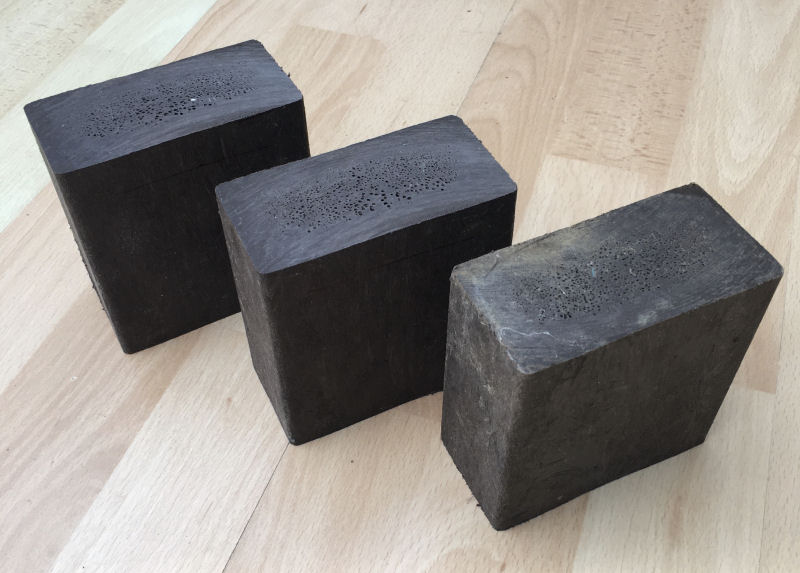
The reed switches are invisibly installed in the composite lumber by routing a slot and drilling holes for the wiring. The slots are sealed and made water tight by using a brown external frame sealant. Each mount is a 100mm length of lumber.
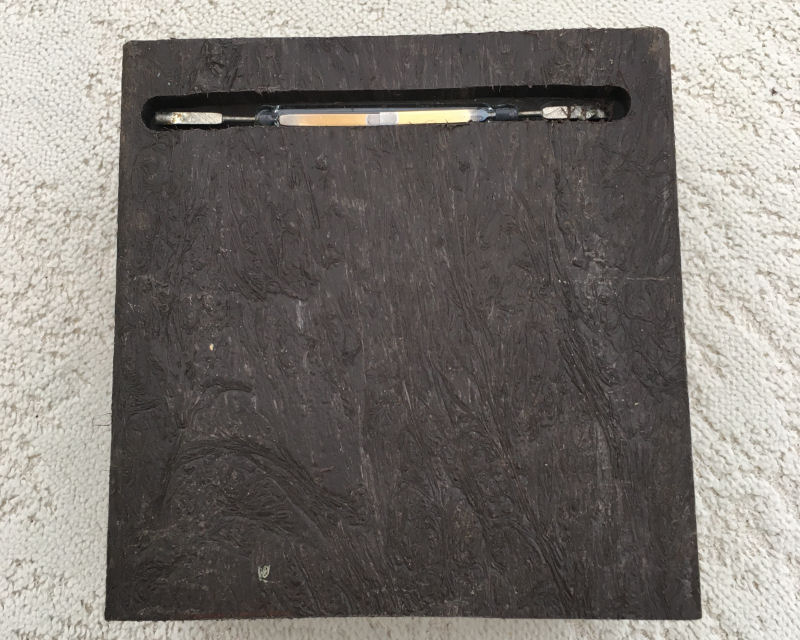
We used a router to cut a slot, inside which the reed switches are fixed in place using brown frame sealant, to match the lumber.
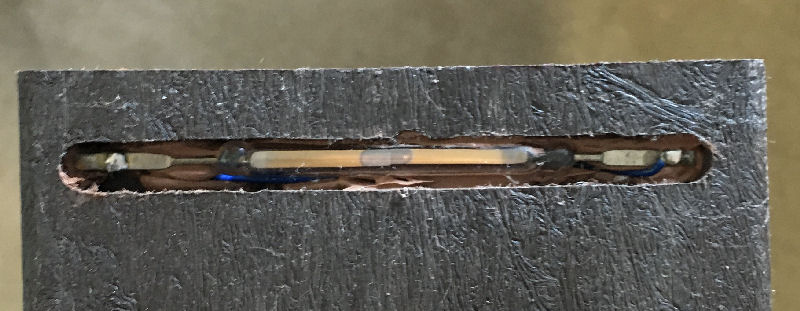
Once the wires are fixed, the reed switches are 'stuck' in place using the frame sealant, making sure they face the right way.
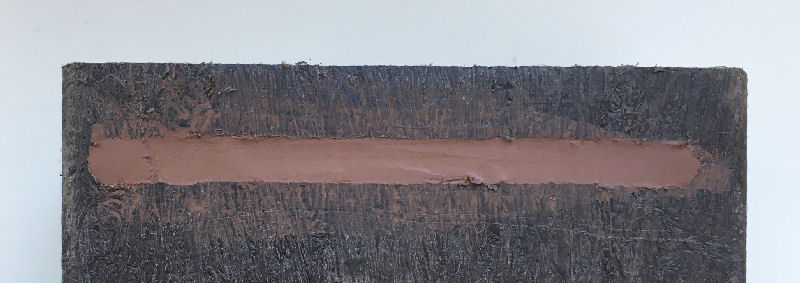
They are then sealed in place with more frame sealant to ensure it is all waterproof. This bit doesn't have to be super tidy, as it is mounted down on at ground level and behind the bins.
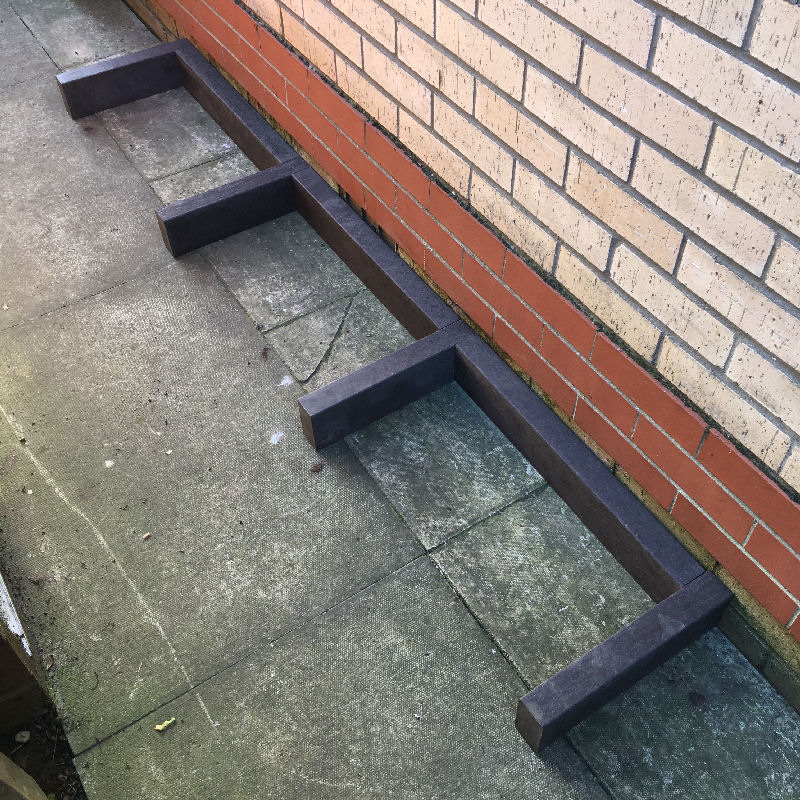
With the bits cut, we laid them out to see what it would look like. The sensor housings are not included here. Testing showed that we needed to taper the entry points for the bins to make it easier to locate them in the dock.
Smart Home
To make the connection with our smart home, we are using the Arduino inside our connected 'garden store'. It has 3 optically isolated, digital inputs to which the reed switches are connected (using wires). This makes it incredibly reliable and requires no batteries. The Arduino simply generates an event each time the status of the reed switch is changed.
Notifications & Voice Announcements
As notifications are one of the common capabilities of our contextual smart home, we can simply reuse them for this project and they and can be intelligently delivered based on presence. I don't want a notification telling me to put the bins out if I'm not at home, so it will be delivered to another family member instead (someone that is at home).
And voice announcements are also one of the common capabilities, so a whole home voice announcement is also delivered if required, reminding the whole household to put the right bins out for collection.
Insight & Learning
This is a very good example of intelligent assisted living in that our contextual smart home is only taking action if required, to avoid becoming repetitive and annoying. It is also acting 'intelligently' based on who is at home, effectively delivering a personalised user experience.



